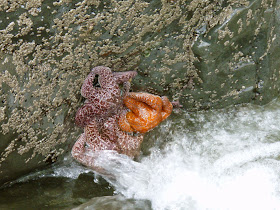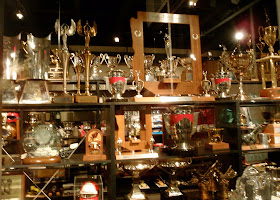“It’s not a story until something goes wrong.”
---Tim Cahill
Acclaimed author Tim Cahill's quote is but one piece of advice I received at the Travel Writers and Photographers Conference in Corte Madera, California.
Held at Book Passage—an independent bookstore—the conference boasts a faculty of noted travel writers, editors and photographers. Don George, Editor-at-large for National Geographic Traveler, chaired the 23rd annual conference.
This year’s conference featured informal gatherings and lectures, as well as interviews with travel celebrities such as Tony Wheeler, author and founder of The Lonely Planet Guides, and Deanne Fitzmaurice, a Pulitzer Prize-winning photographer.
I attended several sessions covering such topics as: Finding Your Story on the Road, Creating a Website, Finding and Creating Freelance Opportunities, Twitter’s Hidden Treasure, and Food and Wine Photography.
Fellow attendees and the faculty of this conference were overwhelmingly focused on foreign travel. I discovered that many writers and editors consider travel within the United States safe, tame and familiar—and therefore not prime, publishable "story" material. That sentiment is supported by the Tim Cahill quote above. However, I believe a good writer can craft a compelling story about any locale, foreign or domestic.
Whether you’re writing for pleasure or for profit, the four-day event dished out a healthy serving of information and learning opportunities.
A short list of tidbits gleaned from the conference:
For Photographers:
- Find the perfect setting and then wait for something to happen to get the ideal shot, e.g. an eagle flying across the sky, a shaft of sunlight illuminating a subject’s face.
- Good photography is timing and “seeing”; know your subject thoroughly by returning to the same place every hour of the day.
For writers:
- Editors are looking for writers who have a presence on social media—Twitter, Facebook, Instagram.
- If you’re pitching a story to a magazine or newspaper, many of them won’t consider something already published on a blog.
- Look for an angle to your story; if you’re going to a destination where tens of thousands of travelers have already gone, search for something unique and fresh to write about that particular place.
- Know your audience: Who is your audience; what message do you want the reader to walk away with?
- If you're writing a personal essay, relate your travel tale to something that's happened in your life.
- If you're writing an impersonal narrative, keep yourself in the background to give readers a sense of place. Don't start your story with "I", and avoid the dreaded diary rehash.
****
Additionally the conference offered advice on the craft and structure of writing—narrative arc, creating the perfect intros (ledes) and endings, using dialog, avoiding cliches and so on—all helpful pointers for anyone who writes, even if you’re not considering selling or publishing your work, even if your stories will only ever be read by you, your friends or your family.
One final piece of advice, agreed upon by all faculty members at the Book Passage Writers and Photographers Conference:
- Whether your passion is writing, photography, or both—love what you do and have fun with it!
 |
The bookstore is located in a plaza in downtown Corte Madera.
We enjoyed dinner the first night, and breakfast and lunch every
day on this plaza. Both the weather and the food were excellent. |






















































